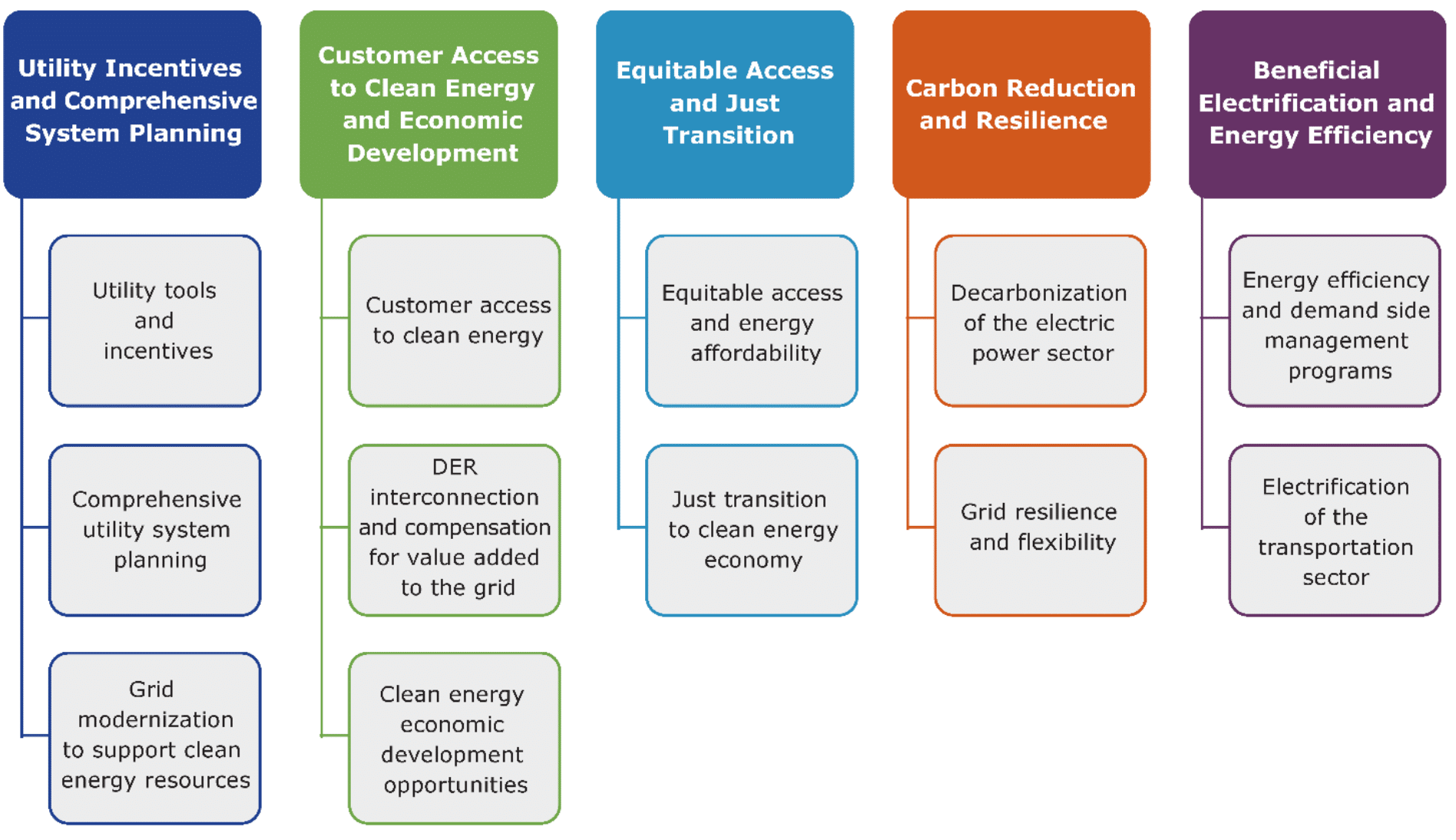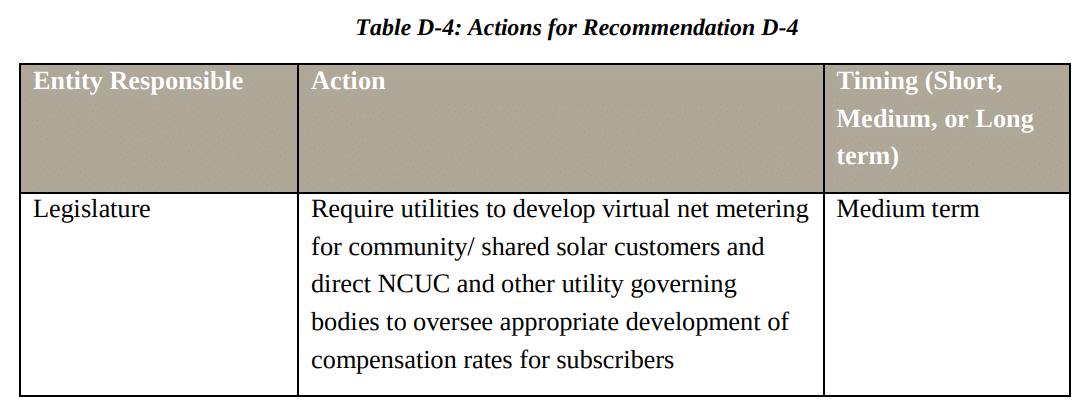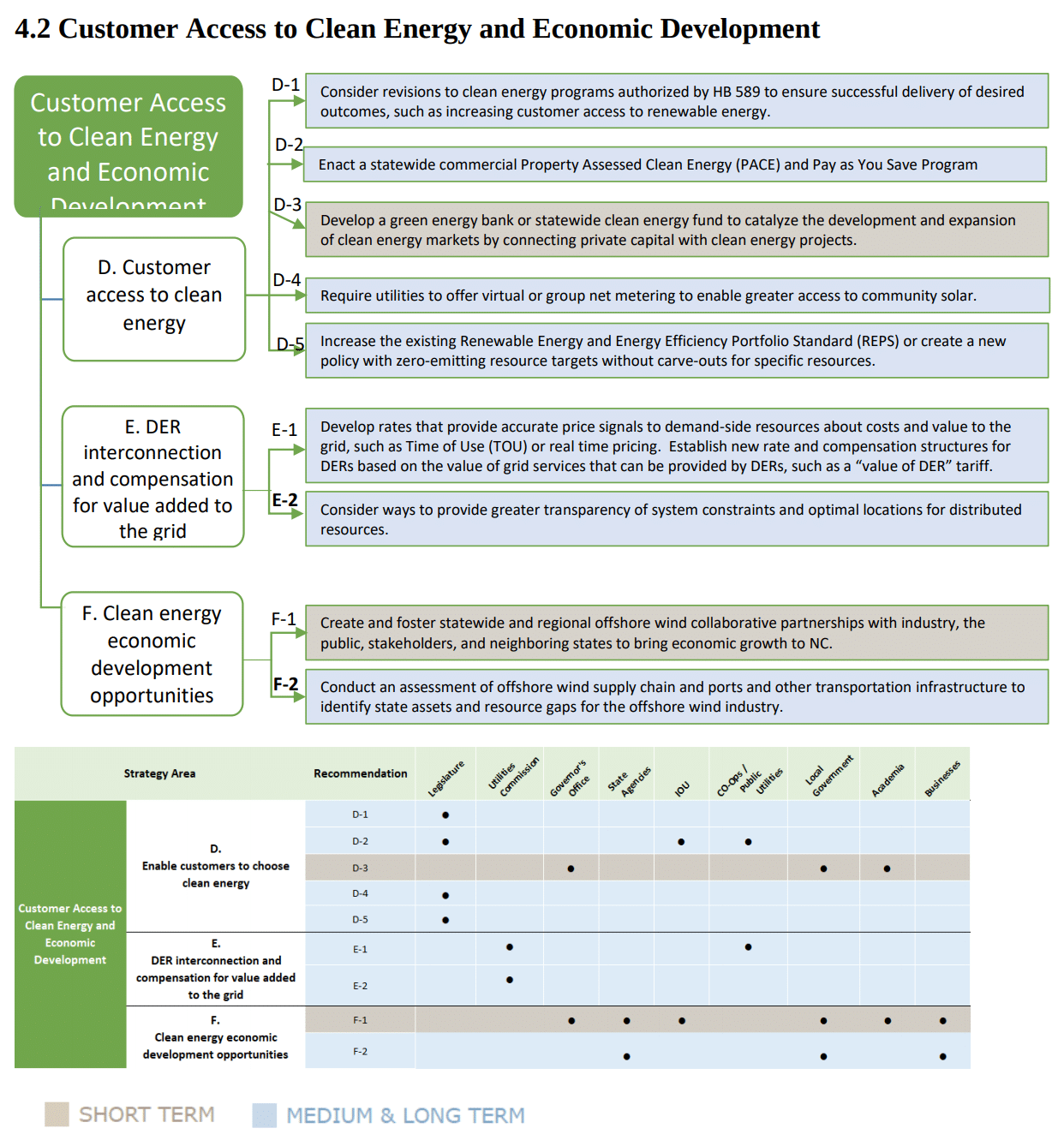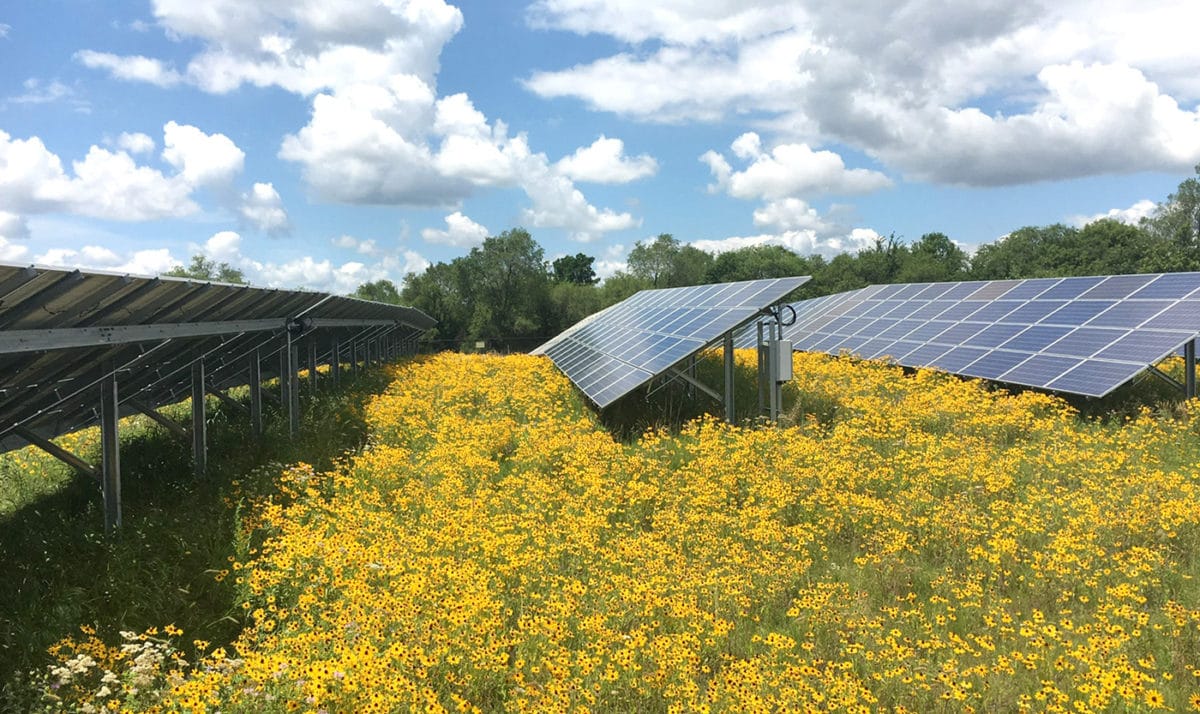Just last week we reported on the unfounded claim that solar power increases emissions in North Carolina, with supporting statements by Duke Energy. We’ll leave that alone, other than to say – it’s going to be a hike up a mountain for the nation’s largest utility emitter of greenhouse gases, but oh is it great to peak.
On Friday, as required by October 2018’s Executive Order No. 80, the North Carolina Department of Environmental Quality has released for public comment a draft version of the North Carolina Clean Energy Plan (CEP) (pdf) whose purpose is, “to foster and encourage the utilization of clean energy resources and the integration of those resources to facilitate the development of a modern and resilient electric grid”.
The draft period for the document is open through September 9, 2019 – with comments to be submitted via this online form.

Most of the document spoke of plans at a high level, making legislative suggestions (structure of one shown below), while pointing to very specific research done by other states. A broad mix of solutions was put forward – taking into consideration end-users through utility ownership, as well as renewable energy, electric vehicles, electrification, interconnection processes, energy efficiency, jobs, competitive electricity markets, utility planning processes, resilience, and more.

The main summary of the strategy and benefits is lain out in slides 25 through 29 (one of which is shown below), which are broken down in Section 4 with “detailed policy and action recommendations” in the above image’s structure.
Specific policy suggestions related to solar, energy storage and electric vehicles in the document included (but were in no way limited to):
- Utility requirements to offer virtual or group net metering to enable greater access to community solar
- Development of rates that provide accurate price signals to demand-side resources about costs and value to the grid, such as Time of Use (TOU) or real time pricing
- Establishment of new rate and compensation structures for DERs based on the value of grid services that can be provided by DERs, such as a “value of DER” tariff
- Enacting a PACE program and a Green Bank
- Increase the existing Renewable Energy and Energy Efficiency Portfolio Standard (REPS) or create a new policy with zero-emitting resource targets without carve-outs for specific resources
- Consider ways to provide greater transparency of system constraints and optimal locations for distributed resources (like in California)
- Consider the full cost of outages when performing cost-benefit analysis for PV+Energy storage. Encourage projects for schools, first-responder facilities, etc.
- Require utilities to develop innovative rate design pilots for electric vehicles to encourage off-peak charging of vehicles and to test effectiveness of different rate structures at shifting customer usage of the grid and encouraging the adoption of electric vehicles

The report noted the state’s future solar+storage plans as lacking,
The 2018 latest Integrated Resource Plans (IRPs) filed by North Carolina’s investor owned utilities (IOUs) indicate that the capacity of solar PV will remain at about the same level from 2025 to 2030. The capacity of energy storage is planned to increase from the current level of 1 MW to 246 MW by 2025 and 291 MW by 2030.
It was noted that during this period 7,200 MW of natural gas capacity will be added while 4,000 MW of coal capacity is retired.
In a fact telling of how recently the developers of the document have been working, NextEra’s less than a month old announcement of a power purchase agreement at a combined 250 MW wind farm, 250 MWac solar farm, and 200 MW / 800 MWh of energy storage in Oklahoma is included. Other references included Lazards recent price comparisons, Indiana’s NIPSCO will replace 1.8 gigawatts (GW) of coal with wind and solar, MidAmerican being the first utility to reach 100% renewable energy by 2020 without increasing customer rates, as well (and more) Xcel Energy’s recent requests for proposals have set record-low prices – receiving solar-plus-storage bids as low as $36 per MW-hour, compared to $25 per MW-hour for standalone solar.
Significant research has been done within the state by professionals aiming to support the utility in greening the state’s grid. North Carolina State University’s “Storage Study” sees a path for 5 GW of lithium ion battery storage for bulk energy time-shifting and peak capacity deferral by 2030. This economically sound investments of solar+storage may help save a utility where it is modeled that 89% of their coal fleet “may have a negative EBITDA today, (with ab anticipation) that 96% could have a negative EBITDA by 2030“.
This content is protected by copyright and may not be reused. If you want to cooperate with us and would like to reuse some of our content, please contact: editors@pv-magazine.com.









By submitting this form you agree to pv magazine using your data for the purposes of publishing your comment.
Your personal data will only be disclosed or otherwise transmitted to third parties for the purposes of spam filtering or if this is necessary for technical maintenance of the website. Any other transfer to third parties will not take place unless this is justified on the basis of applicable data protection regulations or if pv magazine is legally obliged to do so.
You may revoke this consent at any time with effect for the future, in which case your personal data will be deleted immediately. Otherwise, your data will be deleted if pv magazine has processed your request or the purpose of data storage is fulfilled.
Further information on data privacy can be found in our Data Protection Policy.